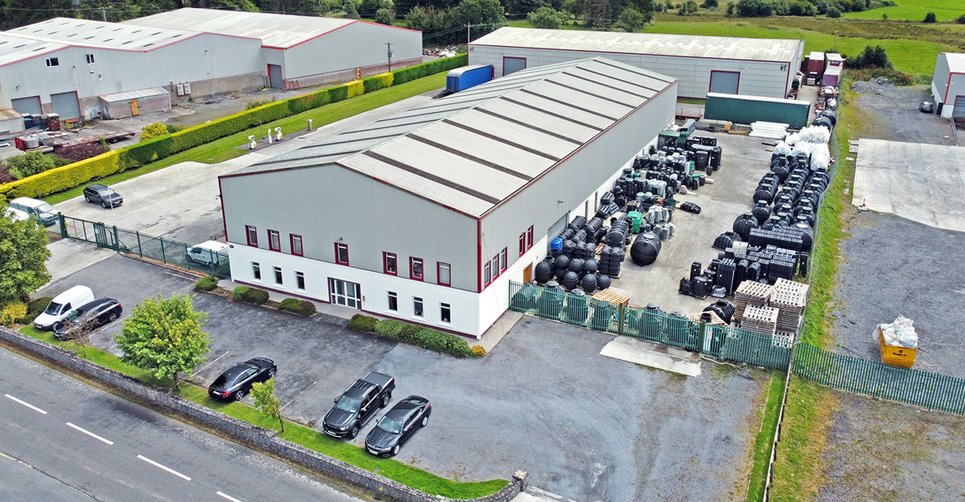How does SBR technology work?
SBR stands for Sequencing Batch Reactor. It is a type of wastewater treatment process in which all of the treatment steps occur in a single reactor tank, and are sequenced in time.
SBR wastewater treatment systems can be used for the treatment of both domestic and commercial wastewater, and are known for their flexibility, treatment efficiency and effluent quality. They can be used for the simultaneous removal of organic matter, nitrogen, and phosphorus from wastewater.
A cost-effective and reliable solution for wastewater treatment
SBR (Sequencing Batch Reactor) technology was first used in the early 1970s. It was developed as a way to improve upon the traditional activated sludge process, which was commonly used for wastewater treatment at the time.
SBR technology was quickly recognised as a valuable solution for wastewater treatment, especially in small communities and decentralised wastewater treatment systems. Nowadays, it's considered a versatile, efficient, and cost-effective technology.
Sequencing batch reactors treat incoming wastewater in cycles of charging, aeration, settlement, and discharge. This particular type of wastewater treatment system is an excellent choice for domestic and commercial projects as it minimises power consumption and maintenance requirements whilst also achieving the highest level of treatment efficiency and effluent quality.
Process of an SBR system - How does SBR technology work?
1.Charging
The wastewater (toilets, showers, baths, sinks, washing machines, dishwashers) from your home or commercial facility flows by gravity into the wastewater tank through an inlet pipe.
2.Aeration
The actual biological cleaning by microorganisms now takes place. The SBR technology alternates between the aeration and rest phases to activate the sludge properly. The so-called activated sludge can now develop with millions of microorganisms and clean the wastewater thoroughly.
3.Settlement phase
A settlement phase now follows, during which the activated sludge sinks to the bottom of the wastewater tank. This allows a clarified water zone to form at the top ready for discharge.
4.Discharge
The treated wastewater is now discharged by gravity or pumped outlet into a percolation area, low-pressure pipe network, or tertiary filter before safely returning to groundwater. The remaining sludge is held back and removed periodically by a licensed de-sludging company that will safely dispose of the sludge from your wastewater tank.
Occasionally larger projects are granted a discharge licence which enables the on-site wastewater treatment system to discharge directly to a watercourse, stream, or river. This licence is issued by the Environmental Protection Agency (EPA) or relevant local authority and outlines the conditions under which the discharge can occur.
These conditions often include limits on the volume and quality of the discharged effluent to ensure that it does not adversely impact water quality or the environment.
There are several reasons why customers choose to buy an SBR (Sequencing Batch Reactor) wastewater treatment system:
- High-efficiency treatment: highly efficient at treating a wide range of wastewater types and loads, which can help to meet discharge standards and reduce environmental impact.
- Low maintenance: designed to be low maintenance, which can help to reduce operational costs for customers.
- Cost-effective: can be a cost-effective solution for treating wastewater, especially for small and medium-sized businesses or communities.
- Scalability: designed to suit the needs of different types of customers, from small households to large industrial facilities.
- Energy efficiency: low power consumption which can help to reduce the environmental impact and the cost of the treatment process.
- Flexibility: integrated with other treatment technologies to achieve a higher level of treatment and recover resources such as energy and nutrients.
- Durability: robust and durable and can last for many years.
- Compliance: help customers comply with EPA and Local County Council regulations for wastewater treatment and discharge licences.
In summary, SBR technology is a highly efficient, low maintenance, cost-effective, and sustainable solution for treating wastewater, it can be the perfect solution for customers who want to reduce the environmental impact and comply with the EPA Code of Practice 2021 and Local County Council regulations

The Self-Builders Essential Guide!
✓ Choose the right wastewater treatment system.
✓ Reduce hidden long-term costs.
✓ Follow a simple step-by-step checklist.


